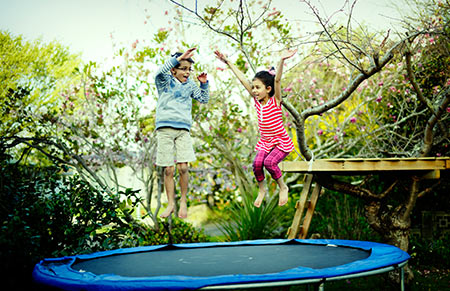What Trampoline Owners Should Know And Understand About Their Legal Liability
The use of trampolines is a popular activity, and there is little doubt that trampolines are an enjoyable way to get much-needed exercise.
However, trampolines also carry some risk. That means they may pose not only a physical danger to users, but they can also introduce legal liability for owners. Below is more information about how trampoline owners can protect themselves from such liability.
What Trampoline Owners Should Know about Their Liability
The laws of premises liability often determines if the owner of a trampoline is to be held liable for an injury that occurs. Premises liability is a legal principle stating that a property owner is responsible for maintaining a safe environment on their property.
Premises liability is not necessarily a blanket concept with no conditions; indeed, in certain circumstances a property owner will not be held liable if an injury occurs on their property. For example, property owners are expected to provide an environment free of hazards for invited guests or others who have a lawful purpose for their presence.
Conversely, trespassers are not provided with the same rights under premises liability. However, if the trespasser is a child, for example, there are different considerations if they enter the property and are injured. That means a property owner may be found liable for a trespassing child’s injuries, especially if the child was “lured” by what is known as an attractive nuisance.
How Trampoline Owners Can Minimize Their Liability Exposure
Individuals shouldn’t take lightly the responsibility of owning a trampoline and allowing others to use it. There is a real possibility of being sued and found liable should someone be injured on a trampoline owned by a private individual.
However, there are several steps that can be taken to reduce the liability of trampoline owners. Many of them are commonsense measures, but they are important to implement if a trampoline owner wants to prevent injury and a subsequent lawsuit. Below are a few of these steps to take:
Ensure Equipment is in Safe Operating Condition
Before an owner ever allows anyone to access their trampoline, the first responsibility is to ensure the trampoline is in safe operating condition. Allowing others to use an inherently dangerous trampoline is a sure path to being found legally liable for an injury.
Specifically, ensuring a trampoline is safe for use means it should be properly assembled by following all manufacturer’s instructions. In addition, all safety equipment–pads, nets and warning labels–should be intact and in good condition. Owners should never allow others to use a trampoline with flaws, such as corroded springs or tears in the bounce mat.
Provide Clear Warnings to Participants
One way trampoline owners can protect themselves from legal liability is by providing warning in advance to users and others who may be considering the use of the trampoline. For example, giving clear verbal instructions is an appropriate means to let others know what is permitted and what is not allowed while on the trampoline.
In addition, trampoline owners should consider posting warning signs on their fence or in other conspicuous locations in close proximity to the trampoline. These notices should provide warnings about the danger of trespassing and explicitly prohibit use of the trampoline without supervision.
Do Not Permit Unsafe Activity
Another important step for trampoline owners to take is to prohibit users from acting in an unsafe manner. Trampoline owners are responsible for monitoring how others use their equipment, and owners shouldn’t hesitate to step in and stop dangerous behaviors.
For example, if too many persons are on the trampoline and cause the weight limit to be exceeded, the owner should ask that some participants get off and wait for their turn. In addition, if a user is reckless and engages in risky bouncing behavior that could cause injury to himself or others, then they should be warned and removed, if necessary.
If you are a trampoline owner and want to know more about protecting yourself from legal liability, be sure to contact a qualified attorney for assistance. The lawyers at Friedman, Rodman and Frank can provide expert advice to you that will enable you to provide a fun, safe environment for your guests.




